National Children’s Eye Health & Safety Month
It’s August and while summer vacation is winding down, students and parents are preparing for another school year. This year, don’t forget to include on your back-to-school checklist an annual eye exam.
It is important to have your child’s eyes tested, because it can lead to greater success in the classroom since much of a child’s learning occurs visually.
Have you noticed any change in your child’s vision? Here are some signs and behaviors you can watch for that may indicate a child is struggling with his or her vision.
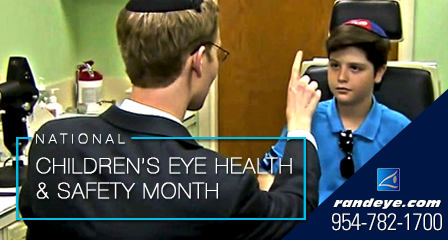
Is Your Child Doing Any of the Following?
- Rubs eyes frequently;
- Closes or covers one eye;
- Tilts head or thrusts head forward;
- Has trouble reading or doing other close-up work, or holds objects close to eyes to see;
- Blinks more than usual or seems cranky when doing close-up work; or
- Squints eyes or frowns.
Does Your Child Say Any of the Following?
- “I can’t see very well”
- After doing close-up work, your child says, “I feel dizzy,” or “I have a headache,”
- “Everything looks blurry,” or “I see double.”
It is recommended that your child have an annual eye exam to screen for any abnormal changes in vision or to confirm that all is well. Let’s start the new school year off with an “A” in vision!
What are the signs of cataracts?
Cataracts are one of the leading causes of vision loss in the United States yet can be corrected to restore a person’s eyesight with accurate and precise technology.
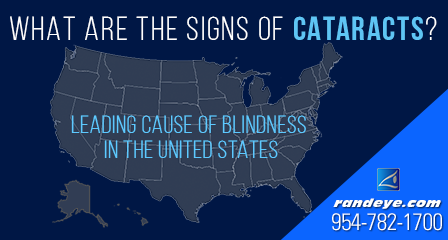
What are the signs of cataracts?
A cataract is a clouding of the eye’s natural lens that affects many of us as we age.
- People with cataracts often have blurry or double vision.
- Colors start to appear dull or muted.
- Sunlight seems overly bright or glaring.
- Driving at night becomes difficult due to glare or halos. around traffic lights and signs.
- Your eyeglass prescription changes too often and still is not perfect.
The sooner you address your eye concerns and how they affect your everyday activities, the sooner you can enjoy your new restored vision. A cataract left untreated may lead to blindness.
Cataract Characteristics
Adult cataracts develop slowly over time, beginning at around age 55. The American Academy of Ophthalmology reports that by age 75, about 70% of people will have cataracts.
Experience and Expertise to See Your Very Best
Early diagnosis is important for maintaining good eye health. Fortunately, we live in a time when correcting cataracts is easily accessible, and the results you can get from The Rand Eye Institute can be extraordinary. Ask about Rand Eye’s Custom Laser Cataract Surgery with the LenSx® Procedure and the various options available to provide your best corrected vision. Schedule a comprehensive eye exam today.
For Healthy Vision Month – Consider that It’s All in the Family
It’s a known fact that we get our eye color from our parents. But did you know that your eye health can be hereditary, too?
That’s why during Healthy Vision Month, and all year long, you should talk to your family members, including parents, grandparents, aunts and uncles, about THEIR eye health history. You might be surprised to learn that genes are a factor in eye disease, including the leading causes of blindness.
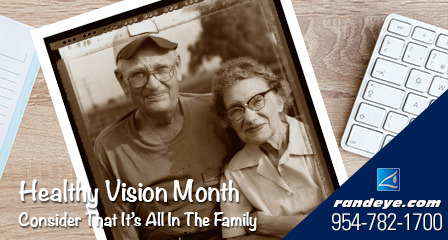
In order to keep your eye health on the straight and narrow, learn if anyone in your family history has been diagnosed with an eye disease. This will help determine if you’re at a higher risk for developing an eye disease yourself.
So while you may have “Your Father’s Eyes”, you may end up with his eye conditions too.
If you think you might be at risk, or if it’s been a while since you’ve had an eye exam, like more than a year or two, you owe it to your future family members to have a comprehensive eye exam. Call or click here to schedule yours.
Where There’s Smoke: The Eyes Have It
We’ve cautioned over the years about the hazards of smoking, but in this article for Healthy Vision Month, here are the specifics as to why so many serious vision problems could be lessened or eliminated if we just put down the cigarettes, and that includes cigars and pipes.
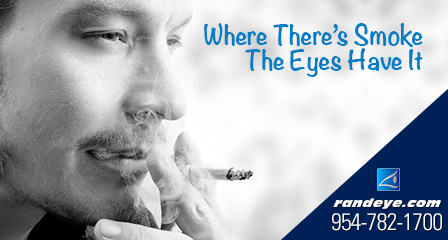
Dry Eye is not directly related to smoking, but it’s easy to see how smoking can make your eyes feel scratchy, burn or turn red.
Cataracts are a clouding of the eye’s natural clear lens. Because smoke from cigarettes goes directly into the bloodstream, smokers are more at risk for getting cataracts.
AMD, or age related macular degeneration, is more likely to happen to someone who smokes than to someone who doesn’t. Currently there is NO cure for AMD.
Diabetic retinopathy can occur in smokers who already have diabetes.
Optic nerve problems can lead to blindness, and those who smoke are at increased risk of having optic nerve problems.
Uveitis affects the part of the eye called the uvea. Smoking can lead to uveitis.
Graves’ disease is a disease of the body’s thyroid gland. One symptom is bulging eyes. Smokers who have Graves’ disease run the risk of going blind.
Pregnant women who smoke run the risk of their child getting bacterial meningitis, known to cause vision problems. Premature birth is another symptom, which could result in “retinopathy of prematurity”, which could mean vision loss or blindness.
The simple truth: Quitting smoking can help save your vision, and during Healthy Vision Month, it’s more important than ever to know this information.
Have Your Eyes Examined
This month, you might be seeing lots of tips and suggestions for Healthy Vision Month, but before you take them all in, take yourself in for a comprehensive eye exam.
The American Academy of Ophthalmology recommends a baseline eye exam at age 40. That’s the time when early signs of disease and changes in your vision can start to occur. Do you have a family history of eye problems? Do you have diabetes or high blood pressure? These can factor into your decision to have an eye exam more frequently.
Upon examining your eyes, your ophthalmologist can tell you how often you should undergo an eye exam. As we age, it’s more important to have our eyes checked regularly as our risk for eye disease increases.
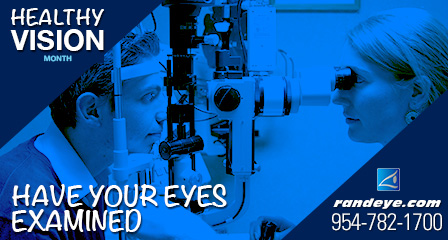
If you are or have been at risk, or you are 65 years or older, it’s recommended that you schedule a comprehensive dilated eye exam. This important exam can take up to 90 minutes and should include the following:
- A rundown of your family medical history, whether you wear glasses or contacts and which medication, if any, you take.
- Visual acuity. Reading a standard eye chart at various distances.
- Your pupils and how they respond to light shined in.
- Side vision.
- Eye movement.
- Your eye pressure, which can indicate signs of glaucoma.
- The front part of your eye.
- Your retina and optic nerve.
- And your current vision prescription.
Depending upon the results of your eye exam, your ophthalmologist may conduct further tests using specialized equipment to try and diagnose a disease in its early stages or give you a clean bill of health. Either way, don’t overlook the opportunity to have your eyes checked. Maybe this month is the time.
If you’d like to schedule a baseline eye exam or a comprehensive dilated eye exam, please contact us today!
Fleet Week Forever: A Fighter Pilot’s Story
Fleet Week is here in South Florida and it brings to mind a patient of Rand Eye Institute who today is soaring high. Here’s his story:
It’s not often that a growing boy will turn down the chance to dive into a huge summer picnic basket, but that’s exactly what a young Steven Hollender did. Attending an air show with his grandparents many years ago, he was called away to lunch. “Not now. I want to see the planes”, shouted Steven.
Ever since that day, and even before, Steven’s career has been looking up. From as far back as Steven’s mother Carmelann Hollender can remember, “He always had an interest in planes and spaceships.”

When he graduated from Hunterdon Central Regional High School in Flemington, NJ in 2006, he announced to the family that he wanted to fly and knew just the flight school he planned to attend: Embry-Riddle Aeronautical University in Daytona Beach, FL, where he was awarded a three and a half year scholarship.
He graduated from Embry-Riddle with Dean’s List honors three of his four years. Before he could become a pilot, though, Steven had one obstacle to overcome: His less than perfect vision was preventing him from sitting in the #1 seat. At his grandmother Joan Di Maio’s request, her optometrist, Dr. Steven Koganovsky from Margate, FL made a personal call to Rand Eye Institute’s Medical Director, Dr. William J, Rand. Dr. Koganovsky asked if he would please see Steven, “I want you to treat Steven like he’s your grandson”, Dr. Koganosky told Dr. Rand, and that’s exactly what he did.
Steven came to the Rand Eye Institute on July 7, 2008, where Dr. William J. Rand had the honor of personally performing the Advanced Surface Laser Procedure, or No-Flap LASIK on Steven, which restored his vision to crystal clarity, a requirement to fly for the US Navy. Almost a decade has passed and Steven’s vision keeps his eagle eyes trained on his passion.
While Steven’s future was looking up, today he’s looking down, from the cockpit of an F-18 fighter jet, where he’s a pilot in the U.S. Navy. Steven recently returned from deployment in the South China Sea and is now living back in California.

“Dr. Rand, I just want to thank you for all you have done for me in correcting my eye problems,” said Steven. “If it wasn’t for you and your staff, I would not be a naval aviator.” Steven’s mother Carmelann backs him up, “Without Dr. Rand’s help, it wouldn’t have been possible.”
Now that Steven’s deployment overseas has ended, he’s back at his home base, The Naval Air Station in Lemoore, CA, where every August, thousands of young boys just like Steven once was, put their lunch to the side to be mesmerized at the Wings over Camarillo air show.
Thank you, Steven, for trusting Dr. Rand with your LASEK at Rand Eye Institute. We’re honored to have played a small role in your vision, launching your career as a fighter pilot. We salute YOU!
For more info on the Ft. Lauderdale Fleet Week schedule here.
Healthy Vision Month – Tips for Keeping Your Eyes Healthy
Healthy Vision Month is all this month, so while it’s top of mind, here are some ways to help keep your vision healthy all year long.
The first one is to pop on a pair of shades that offer 100% UV protection to block UV-A and UV-B rays. Sunglasses help prevent retina damage too and protect the delicate eyelid skin, plus they make you look CSI-Miami cool.

Smoking is a no-no on every list we make. Studies have shown that smokers are more likely to develop AMD than non-smokers. We could write an entire article on the hazards of smoking, but enough said: QUIT NOW.
Proper eye protection is a biggie. Just look over our April blogs for more detailed information on which protection is best for your particular needs, then get them.
Have a family reunion with your family history. Sure, summer’s coming. We love to get together for grillin’ and relaxing, but take time during that opportunity to get to know your family’s medical history to see if you can ward off any genetic eye problems before they occur, then, early intervention with a comprehensive dilated eye-exam can be just what the (eye) doctor ordered.
Eye fatigue, including Computer Vision Syndrome, is a real condition. Consider that more than 70% of the world uses smart phones with that tiny text. Get some relief by reviewing our blog from March here.
And finally, exercising and eating right makes perfect sense for your eyes too. Carrots REALLY do offer vision benefits.
How Safe are YOUR Kid’s Eyes This Summer?
Just as it’s warming up for summer, your kids are warming up their sports skills.
So with that in mind, we’ve got our EYE on sports eye safety for your children.
As we pointed out in our last article, more than 90% of all eye injuries can be prevented through the use of suitable protective eyewear. BUT, to help you be on the lookout for possible eye injuries this season, here are the most common eye injuries that kids incur:
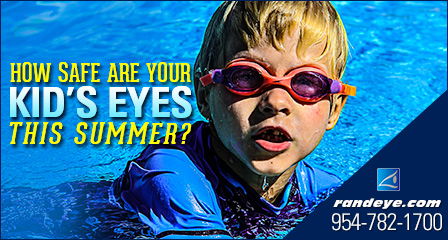
1. Water and pool activities rank #1 for eye injuries. More than 1/3rd of all pool and water activities that affect the eyes happen to kids under the age of 15.
2. Basketball accounts for 1/4th of all eye injuries that will happen to kids 14 and under. Hard to imagine that such a large object like a basketball could cause an eye injury. Of course it’s possible, but injuries in basketball are mostly caused by the fingers and hands of opponents, stressing once again, the need for players to wear proper eye protection.
3. Air, gas, spring and BB-guns, though today reclassified as firearms and removed from toy departments, still pose one of the biggest threats percentage-wise to your kid’s eyes. More than half of all eye injuries suffered from “toy guns” happen to kids 14 and under. Always stress to your kids that projectile-firing instruments should only be used under the supervision of a qualified adult and at a monitored and regulated facility, and of course, eye protection is mandatory.
4 – 7. Baseball, football, soccer and martial arts take up the next four categories of the highest-ranking eye injuries for kids 14 and under, with nearly 3,500 kids in that age group affected.
The takeaway here is that with summer approaching, your kids will spend a lot more time outdoors interacting in sports and that’s good. Just be aware of the need to acquire the appropriate eye protection for them, including instruction for use, so that they have an edge in preventing eye injuries while maximizing fun!
Source: AAO and Prevent Blindness
Buying Your Eyes Time and Protection in Sports
Most people believe that the best money spent is money that saves you from having to spend MORE money. So making a small purchase of just $20 to $40 to guard against eye injury or blindness could be the best EYE-vestment you’ll ever make.
With spring here and crisper weather in the air, the parks are filling up with kids and adults in their evening softball and soccer leagues. But before you slip on that baseball glove or new pair of cleats, don’t run the bases without running to the store first for proper eye protection.
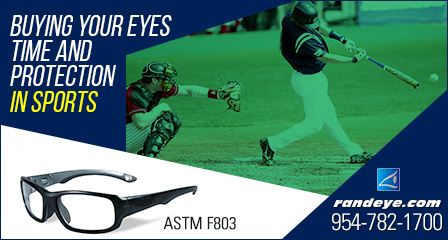
Here are some guidelines to help you choose proper eye guards:
Any eye guard or sports eye protector should be labeled “ASTM F803 approved”. This is the code for eyewear that gives you the highest level of vision protection. Put this code in the notes section of your smart-phone so that you can refer to it when you shop and check the package to see if the eye protection you chose has been approved for sports use.
Don’t scrimp or save on eye guards that don’t have lenses. Only “lensed” protectors are recommended for sports use. Choose eye guards where lenses stay in place or pop out in an accident. Make sure they don’t pop in, which can damage your eyes.
Eye guards should be anti-fogging for clearest vision. Others may have side vents that let air circulate, keeping the lens surface clear.
Padded or cushioned eyewear may cost a bit more, but the more comfortable it is on YOU the more comfortable YOU’LL be, and less likely to toss them to the bench.
Until you get used to playing sports wearing eye protection, it may feel a bit strange or uncomfortable, but hang in there, you only have one set of eyes – SEE that you protect them the best way possible.
And lastly, always try on different brands and sizes of eyewear for comfort and protection. There’s nothing worse than tossing away your eye guards due to discomfort, only to suffer an eye injury without them.
As always, in the event of an eye injury, always see an ophthalmologist or your eye doctor right away, or visit the nearest emergency room at once.
April Showers Us With Tips for Sports Eye Safety Month
Ah, Spring. What a time to be a sports fan. But while you have your eye on your favorite team’s schedule, don’t drop the ball on Sports Eye Safety. Keep these eye safety tips handy:
While each sport has specific recommendations for equipment that helps prevent bodily injuries, they all, without exception, recommend sports eye guards for every player.
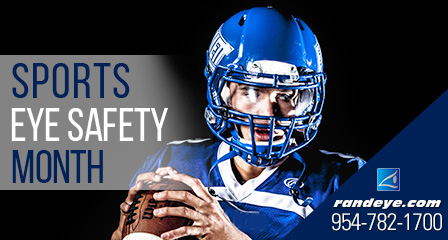
Prescription glasses, sunglasses and even occupational safety glasses do not provide the eye protection one needs* while playing recreational sports.
- Baseball: a batter’s helmet and a faceguard for catchers made of polycarbonate material is a must.
- Basketball: players run the risk of an eye socket fracture or scratches on the cornea without sports eye guards.
- Soccer: players could suffer an inflamed iris or swollen retina if they don’t put on proper eye protection.
- Hockey: players MUST wear polycarbonate masks and sports eye guards to help prevent traumatic injuries.
- Football: wearing a helmet with a polycarbonate shield attached to the faceguard is the best defense.
ALL sports participants run the risk of an opposing player’s finger in the eye without the proper eye protection. So remember, if you or your young ones are playing sports, make sure proper eye safety equipment is a part of the uniform.
*source: Prevent Blindness
